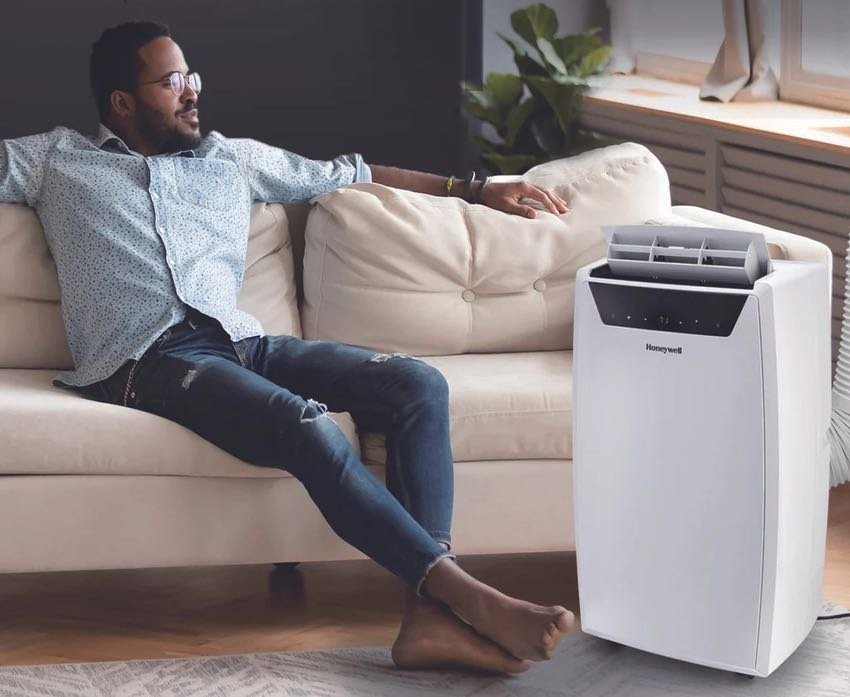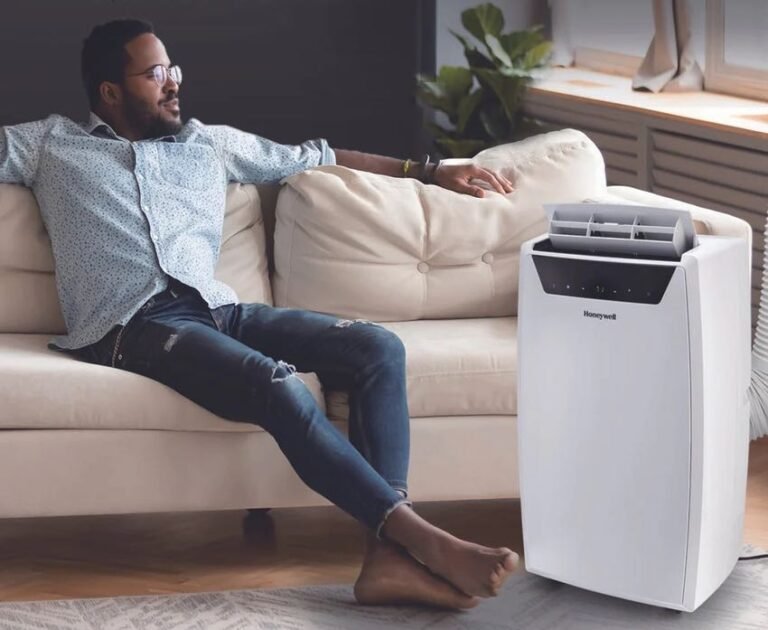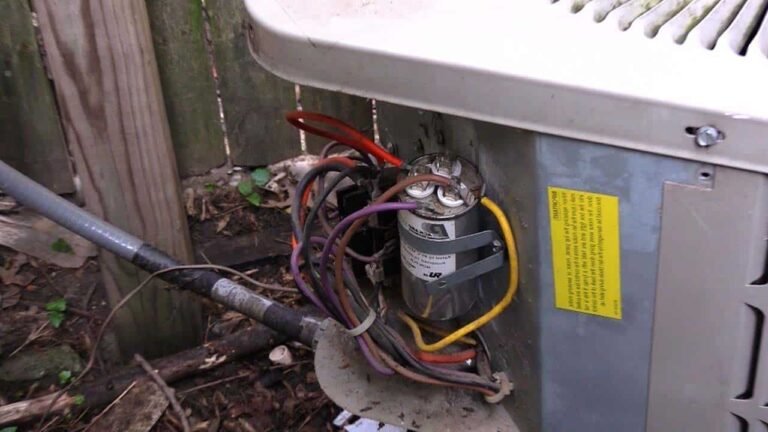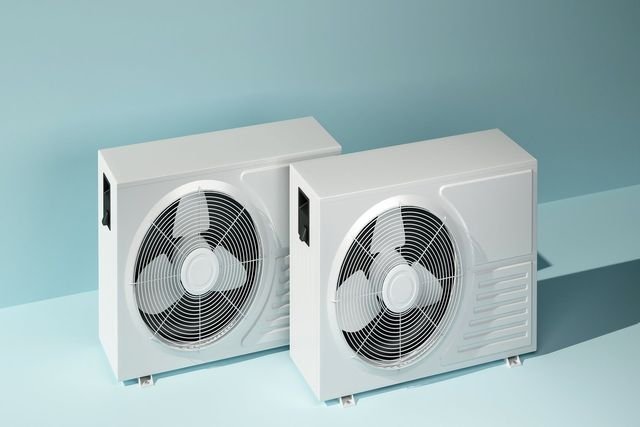How Does Evaporative Air Conditioning Work: Ultimate Guide
Evaporative air conditioning works by pulling in warm air from outside and passing it over water-soaked pads, causing the water to evaporate and cool the air which is then distributed throughout the space. Evaporative air conditioning, also known as swamp cooling, is an energy-efficient and cost-effective cooling solution.
It works on the principle of evaporation, where heat energy is absorbed from the air, reducing its temperature and increasing its humidity. This cooling process is achieved by a fan, which draws warm air from outside through a series of moistened pads.
As the air passes through the pads, the water evaporates and cools the air, which is then circulated inside the building. This natural and eco-friendly cooling method is particularly effective in dry climates where the evaporative process is most efficient.
Affordable Cooling Solution
Evaporative air conditioning is an affordable cooling solution for your home or office. With a lower initial cost compared to other cooling systems, it provides a budget-friendly option for those looking to beat the heat. The mechanism of evaporative cooling is simple yet effective. It works by pulling warm air through water-saturated pads, causing evaporation which cools the air. By using just water and a fan, this system consumes less energy compared to traditional air conditioners, making it a more energy-efficient choice. As a result, you can expect reduced energy bills while still enjoying comfortable temperatures indoors. This cooling solution is particularly suitable for dry climates where humidity levels are low. In these conditions, the efficiency of evaporative air conditioning is maximized, providing an economical and environmentally friendly cooling option.

Credit: cielowigle.com
Environmentally Friendly Cooling Option
Evaporative air conditioning is an environmentally friendly cooling option that operates without emitting any harmful emissions. It utilizes natural air and water to create a comfortable indoor environment. When hot air passes through the unit’s damp cooling pads, the water evaporates and cools the air. The cooled air is then circulated throughout the space, providing a refreshing and energy-efficient cooling solution.
This cooling process is highly effective in dry climates, as it adds moisture to the air, making it ideal for regions with low humidity. By harnessing the natural process of evaporation, evaporative air conditioning systems consume significantly less energy compared to traditional air conditioners. They do not rely on energy-intensive refrigeration cycles or harmful refrigerants, making them a greener and more sustainable cooling option.
Health Benefits Of Evaporative Air Conditioning
html
Evaporative air conditioning systems offer several health benefits. Firstly, they improve air quality by filtering and circulating fresh outdoor air within the building. This helps in reducing the amount of indoor pollutants such as dust, pollen, and pet dander. Furthermore, evaporative cooling units increase moisture in the air, which can be particularly beneficial for individuals suffering from allergies or respiratory conditions. The increased humidity levels help to relieve dryness in the nose and throat, reducing symptoms like coughing and throat irritation. Evaporative air conditioning can also alleviate allergy symptoms by trapping airborne particles in the cooling pads. This prevents allergens from circulating inside the room, providing much-needed relief to those with allergies. Overall, evaporative air conditioning not only cools the room but also contributes to a healthier indoor environment.
The Science Behind Evaporative Cooling
html
Evaporative air conditioning is a technology that harnesses the natural process of evaporation to cool the surrounding air. The science behind it is quite fascinating.
The evaporation process is at the heart of this cooling system. When water evaporates, it absorbs heat from its surroundings, which leads to a decrease in temperature. This is why we feel cooler when sweat evaporates from our skin.
Evaporative air conditioners work on the same principle. They use a fan to draw warm air from the environment and pass it over a series of wet pads or a water-soaked medium. As the air passes through, the water evaporates, absorbing the heat energy and lowering the temperature of the air. The cool air is then circulated back into the room, providing a refreshing and comfortable atmosphere.
Unlike traditional air conditioners that rely on refrigerants and compressors to cool the air, evaporative cooling is a more energy-efficient alternative. It offers several benefits, such as natural and healthy cooling, cost-effectiveness, and environmental friendliness. It is particularly suitable for dry and arid climates where humidity levels are low.
| Benefits of Evaporative Air Conditioning: |
|---|
| – Natural and healthy cooling |
| – Cost-effectiveness |
| – Energy efficiency |
| – Environmentally friendly |
In conclusion, evaporative air conditioning works by utilizing the evaporation process to cool the air. It offers a more sustainable and efficient cooling solution compared to traditional air conditioning systems. By understanding the science behind evaporative cooling, you can make an informed decision about whether it is the right choice for your cooling needs.
Components Of Evaporative Air Conditioning System
In an evaporative air conditioning system, there are several key components that work together to cool the air efficiently. The air handling unit plays a crucial role in this process. It is responsible for drawing in outside air and passing it through the evaporative media. The media is a series of wetted pads or panels that help cool and humidify the air as it passes through. Additionally, the water distribution system is essential for supplying water to the media. It ensures that the media remains sufficiently wet for optimal cooling. As the air passes through the media, the warm air absorbs moisture from the wet surfaces, which results in the cooling effect. The cooled air is then distributed throughout the space, providing a comfortable environment. This system is not only energy-efficient but also cost-effective, making it a popular choice for cooling in dry climates.
Working Mechanism Of Evaporative Air Conditioning System
Working Mechanism of Evaporative Air Conditioning System
Evaporative air conditioning works by utilizing the evaporation process to cool the air. One of the key components of this system is the fresh air intake. This is responsible for drawing in fresh outdoor air into the unit. As the air enters, it passes through specially designed pads that are saturated with water.
Evaporation and Cooling:
As the warm air comes into contact with the moist pads, the water evaporates and absorbs the heat energy from the air. This process naturally cools down the air, and the cooled air is then pushed into the living space.
Air Circulation:
In order to circulate the cooled air effectively, a fan is used to push the air through the pads and into the desired area. The process of air circulation helps to lower the temperature and increase the overall comfort level. The continuous evaporation and air circulation provide a consistent supply of cool, fresh air.
Evaporative air conditioning systems are known for their energy efficiency and environmentally friendly operation. They require less electricity compared to traditional air conditioning units, making them an excellent choice for those looking to reduce their energy consumption.
Climate Suitability For Evaporative Cooling
Climate Suitability for Evaporative Cooling
Evaporative air conditioning is a highly effective cooling solution, particularly in dry climates. In regions with low humidity, such as desert areas, the benefits of evaporative cooling are abundant. Dry Climate Benefits
- Economical operation: Evaporative cooling systems consume significantly less energy compared to traditional air conditioners, resulting in lower utility bills.
- Natural and eco-friendly: Instead of relying on refrigerants or harmful chemicals, evaporative cooling utilizes the natural process of water evaporation to cool the air.
- Improved air quality: Evaporative cooling filters and circulates fresh air, creating a healthier indoor environment by reducing allergens and pollutants.
However, evaporative cooling has limitations in humid climates. Limitations in Humid Climates
- Reduced effectiveness: In high humidity areas, evaporative cooling is less effective as the air already contains significant moisture, limiting the evaporation process.
- Potential for moisture-related issues: Excessive humidity can lead to the growth of mold, mildew, and bacteria, causing potential health risks and damage to property.
- Requires proper ventilation: To ensure optimal performance, evaporative cooling systems in humid climates need adequate ventilation to control the moisture levels indoors.
Understanding the climate suitability for evaporative cooling is crucial when considering this cooling method as an efficient and sustainable option for your home or workplace.
Size And Capacity Of Evaporative Cooler
How Does Evaporative Air Conditioning Work
Evaporative air conditioning systems work by drawing in warm air from outside and passing it over a series of damp cooling pads. As the air moves across the pads, the water in the pads evaporates, causing the air temperature to drop significantly. The cooled air is then blown into the desired space, providing effective cooling.
Size and Capacity of Evaporative Cooler
When it comes to the size and capacity of an evaporative cooler, two important factors need to be considered: the area to be cooled and the cooling capacity required. The area to be cooled determines the size of the unit, while the cooling capacity calculation helps in determining the right size.
Area to Be Cooled
The area to be cooled plays a significant role in selecting the right evaporative cooler. Larger spaces require a higher capacity unit to effectively cool the area. It is essential to measure the size of the space accurately to ensure that the cooler can deliver sufficient cooling.
Cooling Capacity Calculation
The cooling capacity calculation involves determining the amount of cooling required to adequately cool the area. This calculation takes into account factors such as the size of the space, insulation, the number of windows, and heat-producing equipment in the area. A professional can assist in determining the cooling capacity needed based on these factors.
Choosing the Right Size
Choosing the right size evaporative cooler is crucial for its efficient operation. A unit that is too small may struggle to cool the designated area, while a unit that is too large can lead to excessive energy consumption. Understanding the area to be cooled and performing the cooling capacity calculation helps in selecting the optimum size for maximum comfort and energy efficiency.
Maintenance And Upkeep Of Evaporative Cooling System
Regular cleaning and filter maintenance are crucial for the proper functioning and longevity of your evaporative cooling system. Cleaning the system helps to remove any dirt, debris, or mineral deposits that may have accumulated over time. This can be done by using a soft brush or vacuum to clean the air vents and grill, as well as wiping down the exterior of the unit. Additionally, the filters should be cleaned or replaced on a regular basis to ensure optimal airflow.
Proper water treatment is also essential in maintaining the performance of your evaporative cooling system. Using the recommended chemicals can prevent the growth of algae or bacteria in the water reservoir and extend the life of the unit.
During winter months when the system is not in use, it is important to properly store it. This involves draining any remaining water from the tank, cleaning the filters, and covering the unit to protect it from dust, debris, and extreme weather conditions. By following these maintenance steps, you can ensure that your evaporative cooling system operates efficiently throughout its lifespan.
Frequently Asked Questions For How Does Evaporative Air Conditioning Work
How Does Evaporative Air Conditioning Work?
Evaporative air conditioning works by drawing in fresh air from outside and passing it through moist pads. As the air passes through the pads, the water evaporates and cools the air. The cool air is then circulated throughout the house, providing a comfortable indoor environment.
Conclusion
Evaporative air conditioning is an energy-efficient cooling system that works by harnessing water’s evaporative properties. By passing warm air through wet filter pads, the water evaporates, cooling and moisturizing the air. This process not only provides a refreshing and eco-friendly approach to cooling, but also helps to maintain a healthy and comfortable indoor environment.
With its simplicity and effectiveness, evaporative air conditioning is a popular choice for many households and businesses, offering both cost savings and environmental benefits. So, if you’re looking for a reliable and efficient cooling solution, consider the wonders of evaporative air conditioning.






